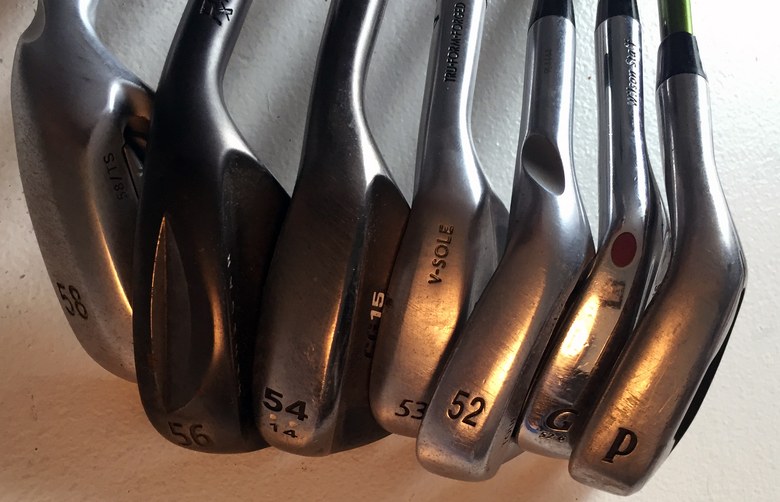Why you need to mind the gaps in your short clubs
By Mike Stachura
Odds are your wedge lofts – everything from your sand wedge to your pitching wedge – are messed up. But it’s not your fault. Manufacturers have been strengthening the lofts on irons for decades and while there are merits and demerits to this practice, it does mean that golfers need to pay a little more attention to how the short irons and wedges are spaced within your set. Proper spacing will produce meaningful yardage gaps between clubs and making those distances consistent is going to yield more short shots that finish closer to the hole. Here are some hard and fast rules to help you mind the gaps.
1. Count how many clubs you want in your bag up to and including the 9-iron. Starting with your putter, if the number of clubs you’re carrying up to your 9-iron is 11, then you only have room for three wedges. If it’s 10, then you have room for four wedges. In our experience, if you only have three clubs to carry you past your 40-degree 9-iron, you’re going to be playing a lot of in-between and half shots in the scoring zone when you should be making full swings. Finding a way to make space in your bag for one extra wedge is going to give you the ability to have more specific clubs for certain shots. Instead of trying to hit a shot with a 3/4 swing, you’ll be able to take a full swing.
2. Know your pitching wedge loft. If it’s 45 degrees or less, add three more wedges that are spaced apart by no more than 4-5 degrees each. So generally think about putting in a gap wedge that’s 48 or 50 degrees, a sand wedge that’s between 54 and 56 degrees, and a lob wedge that’s between 58 and 60 degrees. These are general guidelines, make sure you’re working with your fitter to get the gapping that works best for you.
3. You must have a wedge between your pitching wedge loft and your sand wedge loft. The gap wedge (usually around 50 degrees) provides a vital yardage between those two clubs. Our recommendation is that you endeavor to match the gap wedge to the short irons and pitching wedge in your set because this gap wedge will also likely be a full-swing club. Your sand wedge and lob wedge will be used more around the green than in full swings.
4. Remember wedges can easily be bent a degree or two, strong or weak, to achieve the desired loft spacing. That means a 50-degree wedge can easily be a 51- or 49-degree club, But be aware that as you start strengthening or weakening the lofts of your high-lofted wedges, you’re also affecting the bounce angle. Every degree strong reduces bounce by a degree, and vice versa.
5. Ultra-high lofted wedges may help the ball get in the air quicker, but we think a maximum loft of 58 degrees provides the best versatility for your highest-lofted wedge and a more solid contact for optimized greenside spin. An ideal progression is for the pitching wedge to be 45 degrees, followed by a 50-degree gap wedge and complemented by 54- and 58-degree sand and lob wedges.
Related: How to hit wedges tight from any distance
6. As always, get with your fitter to gain a better understanding of how your irons and wedges should work together. In fact, if you’re being fit for irons, it’s an excellent idea to add on a wedge fitting to properly fill out the rest of your bag. You can find a qualified fitter here.









